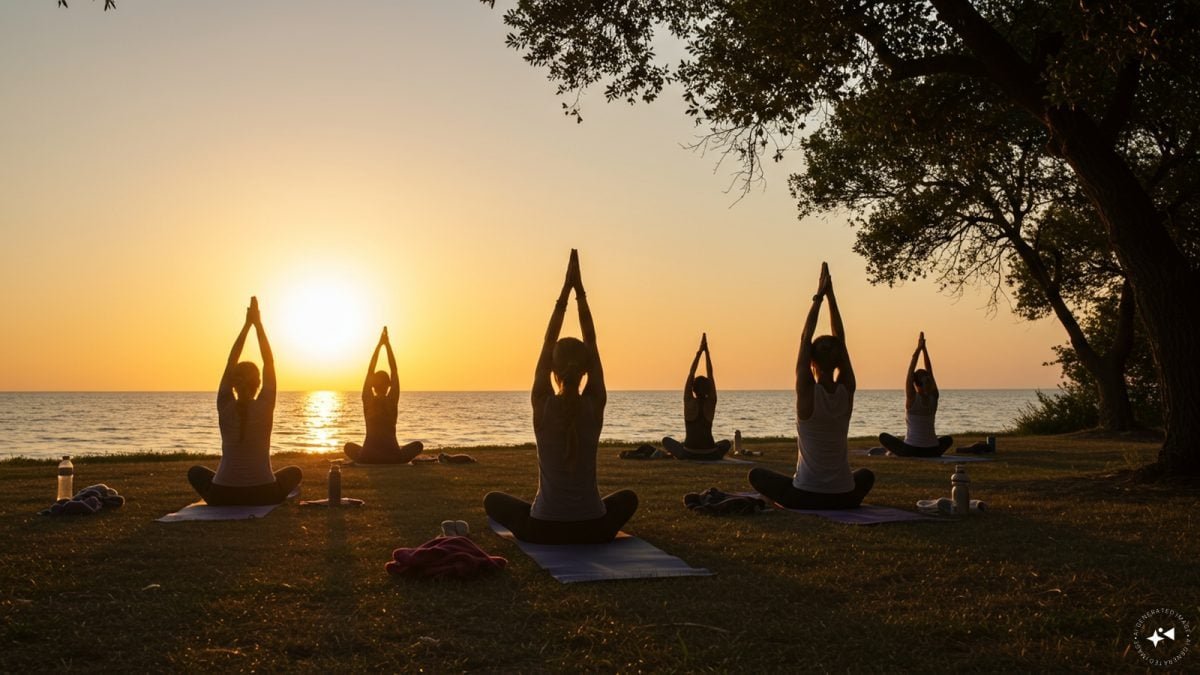Last Updated:June 21, 2025, 07:30 IST
Summer Solstice 2025 in the Northern Hemisphere will occur on Friday, June 20, 2025, at 10:42 PM EDT, which is Saturday, June 21, 2025, at 8:12 AM IST.
Summer Solstice 2025: This celestial event carries deep cultural, historical and scientific importance. (AI generated image)
Summer Solstice 2025: The Summer Solstice marks the longest day of the year and usually falls between June 20 and June 22. Also known as the midsummer or Estival solstice, its name comes from the Latin terms “sol” (sun) and “sistere” (to stand still), symbolising the moment when the sun seems to pause at its peak in the sky.
This celestial event carries deep cultural, historical and scientific importance, and is honoured with diverse traditions and celebrations across the globe.
What Is Summer Solstice And What Causes It?
The Summer Solstice 2025 in the Northern Hemisphere will occur on Friday, June 20, 2025, at 10:42 PM EDT, which is Saturday, June 21, 2025, at 8:12 AM IST (or 2:42 AM GMT). It marks the longest day of the year in the Northern Hemisphere and the shortest in the Southern Hemisphere.
This event happens because Earth is tilted at an angle of 23.5 degrees. During this time of the year, the Northern Hemisphere leans towards the sun, causing the sun to appear higher in the sky at midday and extending daylight hours.
Summer Solstice History
The term “solstice” comes from the Latin words sol, meaning sun, and sistere, meaning to stand still or stop. This astronomical event takes place twice a year — once in the Northern Hemisphere between June 20 and 22, and once in the Southern Hemisphere between December 20 and 23, depending on the calendar year and time zone.
Ancient civilisations observed how the sun’s position in the sky, daylight duration and sunrise/sunset points changed consistently throughout the year. Many even constructed structures, such as Stonehenge in England, to track these solar movements, honour the sun, and predict seasonal changes.
During the June solstice, the North Pole tilts most directly towards the sun, while the South Pole leans furthest away. This tilt causes areas north of the equator to experience daylight lasting longer than 12 hours, while those south of the equator have shorter days.
A few thousand years ago, the summer solstice occurred when the sun was positioned in the constellation Cancer (Latin for “crab”). This is how the latitude line known as the Tropic of Cancer got its name.
On the June solstice, the sun reaches its northernmost point in the sky—directly overhead at the Tropic of Cancer—appears to pause briefly, and then begins to shift southward again.
Contrary to what some may think, the sun’s path on this day isn’t a straight line—it forms a curved arc across the sky. Due to this extreme position, sunlight enters parts of homes and buildings that usually remain in shadow the rest of the year.
On the summer solstice, the sun rises at its farthest point to the northeast and sets at its farthest northwest location.
The date of the solstice isn’t the same every year. It falls on June 20, 21 or 22, depending on Earth’s orbit and tilt, not our human-made calendar. This variability is due to astronomical mechanics, not man-made timekeeping.
Summer Solstice Traditions Around The World
Across cultures, the Summer Solstice has inspired unique traditions that honour the power of the sun:
- Stonehenge Gathering (UK): Thousands gather to watch the sunrise align with ancient stones.
- Midsummer (Sweden): Celebrated with flower crowns, folk dances and feasts under the midnight sun.
- Kupala Night (Eastern Europe): Involves bonfires, dancing and jumping over flames to bring good luck.
- Inti Raymi (Peru): An Incan sun festival held in Cusco with colourful parades and ceremonies.
- Yoga (India/Global): Coinciding with the solstice, people practice yoga at sunrise to promote wellness.
- Sunrise Salutations (USA): Spiritual communities gather at dawn in parks or on beaches for meditation and rituals.
- Fire Festivals (Spain): Towns light bonfires to symbolise the burning away of bad energy and to welcome abundance.
- Floral Offerings (Hawaii): Locals present leis and perform hula dances in celebration of La, the sun god.
How To Celebrate The Longest Day Of The Year?
- You don’t need ancient ruins or crowds to enjoy the solstice. Start your day early by watching the sunrise—ideally from a rooftop, hill or beach. Practice a few sun salutations or light stretching outdoors to greet the day.
- Spend time in nature—go hiking, swim in a lake, or simply walk barefoot on the grass. Create a backyard picnic with sun-themed foods like citrus salads, honey cakes and iced herbal teas.
- Decorate your space with sunflowers, candles and anything golden.
- At sunset, light a small bonfire or candle and reflect on your goals for the season ahead. Whether alone or with loved ones, embrace the light—literally and metaphorically.

Bhaswati Sengupta is a Sub-Editor at News18, where she works closely with the Web Stories and Photo Gallery team to create visually engaging and impactful digital content. She also contributes to Lifestyle sect…Read More
Bhaswati Sengupta is a Sub-Editor at News18, where she works closely with the Web Stories and Photo Gallery team to create visually engaging and impactful digital content. She also contributes to Lifestyle sect… Read More
- First Published:
#Summer #Solstice #History #Traditions #Celebrate #Longest #Day #Year #Lifestyle #News



